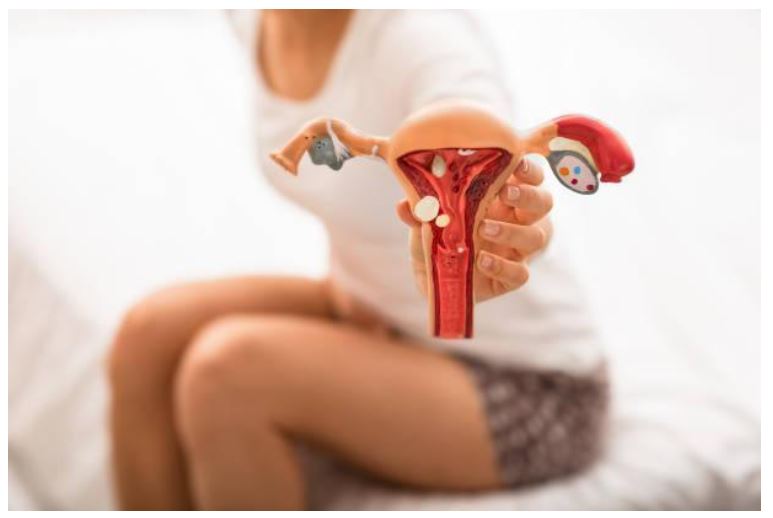At-Home Vaginal Microbiome Test
The La biome vaginal microbiome test is an innovative at-home solution that allows women to gain valuable insights into the health of their vaginal microbiome. By understanding the importance of the vaginal microbe and how it affects overall health, women can take proactive steps to maintain a healthy and balanced ecosystem.
In this article, we will delve into the specifics of the vaginal microbiome, the benefits of at-home testing, how the test works, common vaginal infections, and tips for maintaining a healthy vaginal microbiome.

What is the Vaginal Microbiome?
Understanding the Importance of Vaginal Microbiome
The vaginal microbiome refers to the complex ecosystem of microorganisms that reside in the vagina. It consists of various bacteria, fungal, and other microorganisms that play a crucial role in maintaining vaginal health. A healthy vaginal microbiome is dominated by beneficial bacteria, primarily Lactobacillus species, which help maintain the optimal pH level and protect against harmful pathogens.
How Does the Vaginal Microbiome Affect Health?
The vaginal microbiome has a profound impact on overall health. It helps prevent the overgrowth of pathogenic bacteria, fungi, and viruses, reducing the risk of vaginal infections such as bacterial vaginosis (BV) and yeast infections. Additionally, a healthy vaginal microbiome is linked to improved fertility and a reduced risk of sexually transmitted infections (STIs).
The Role of Lactobacillus in Maintaining Vaginal Health
Lactobacillus is one of the key players in maintaining a healthy vaginal microbiome. It produces lactic acid, which helps maintain an acidic environment that inhibits the growth of harmful microorganisms. When the balance of Lactobacillus and other beneficial bacteria is disrupted, it can lead to an overgrowth of opportunistic bacteria and increase the risk of infection.
Why Should You Consider an At-Home Vaginal Microbiome Test?
Benefits of At-Home Vaginal Microbiome Testing
An at-home vaginal microbiome test provides several benefits for women. It allows for convenient testing from the comfort of your home, eliminating the need for doctor visits or lab appointments. By testing regularly, women can track changes in their microbiome and take proactive measures to maintain a healthy balance. Furthermore, early detection of imbalances or infections can help prevent complications and improve reproductive health.
Preventing Bacterial Vaginosis with Early Detection
Bacterial vaginosis (BV) is a common vaginal infection characterised by an imbalance in the vaginal microbiome. It can cause symptoms like abnormal discharge, itching, and discomfort. With regular at-home testing, women can detect BV early and take steps to restore the balance of their vaginal microbiota, reducing the risk of recurring infections.
Identifying Imbalances in the Vaginal Microbiome
An at-home vaginal microbiome test provides valuable insights into the composition of the vaginal microbiota. It can reveal imbalances in the presence of certain microorganisms, such as an overgrowth of pathogenic bacteria or fungi. By identifying these imbalances, women can take targeted actions to restore a healthy microbiome and prevent future infections.
How Does a Vaginal Microbiome Test Work?
Understanding the Test Kit and Sampling Process
The La biome vaginal microbiome test comes with a simple test kit that includes a vaginal swab. To take the test, you need to swab the inside of your vagina and then send the swab back to the lab for analysis. The sampling process is quick, painless, and can be done in the comfort of your own home.
What Do the Results of a Vaginal Microbiome Test Reveal?
The results of a vaginal microbiome test provide a comprehensive profile of your vaginal microbiota. It includes information about the presence of various microorganisms, the balance of beneficial and pathogenic bacteria, and the overall health of your vaginal ecosystem. These results can help you understand your microbiome profile and make informed decisions regarding your reproductive health.
Interpreting Your Microbiome Profile for Improved Reproductive Health
Interpreting your microbiome profile is crucial for maintaining and improving reproductive health. A trained healthcare professional can analyse your results and provide personalised recommendations to restore a healthy balance in your vaginal microbiome. This may include probiotic supplements, lifestyle changes, and targeted treatments for any identified infections.
Alternatively, to make life much easier, you can try our vaginal health quiz to find out if your vagina is in the right state or not.

Types of Vaginal Infections and the Vaginal Microbiome
Exploring Bacterial Vaginosis and its Impact on the Microbiome
Bacterial vaginosis (BV) is a common vaginal infection characterised by an overgrowth of opportunistic bacteria. It can disrupt the balance of the vaginal microbiome, leading to symptoms like a fishy odour, abnormal discharge, and itching. Regular vaginal microbiome testing can help detect BV early, allowing for prompt treatment and the prevention of recurring infections.
Understanding the Link Between the Vaginal Microbiome and STDs
The vaginal microbiome plays a crucial role in protecting against sexually transmitted diseases (STDs). A healthy microbiome with a balanced presence of beneficial bacteria helps create a protective barrier against pathogens, reducing the risk of contracting STDs like gonorrhoea and chlamydia. Regular testing and maintaining a healthy microbiome can contribute to a lower risk of these infections.
Preventing and Treating Vaginal Infections Through Microbiome Management
Microbiome management is key to preventing and treating vaginal infections. By maintaining a healthy balance of beneficial bacteria and monitoring the composition of your vaginal microbiota through regular testing, you can take proactive measures to prevent infections. In the case of an infection, targeted treatments can be prescribed based on the specific pathogens detected in your microbiome.
Maintaining a Healthy Vaginal Microbiome
Practises and Tips for a Healthy Vaginal Microbiome
Maintaining a healthy vaginal microbiome requires certain practises and lifestyle choices. These include avoiding douching, using mild and pH-friendly feminine hygiene products, wearing breathable underwear, practising safe sex, and maintaining a balanced diet. Additionally, incorporating probiotic-rich foods or supplements into your routine can promote the growth of beneficial bacteria. At La biome, we have the right selection of vaginal probiotics you need to keep your vagina healthy.
The Effects of Hormonal Changes on the Vaginal Microbiome
Hormonal changes can affect the vaginal microbiome. Fluctuations in oestrogen levels, such as those experienced during pregnancy or menopause, can lead to changes in the composition of the vaginal microbiota. It is important to monitor these changes and take appropriate measures, such as using hormonal treatments or probiotics, to maintain a healthy balance.
Addressing Recurrent Vaginal Infections through Microbiome Restoration
Recurrent vaginal infections can be frustrating and disruptive to daily life. Microbiome restoration therapies, such as probiotic treatments and targeted antimicrobial medications, can help address these infections by restoring a healthy balance in the vaginal microbiome. Regular testing and close monitoring are essential to prevent further disruptions and maintain long-term vaginal health.
Our newly introduced test kit is the trusted tool you need to find out all you need to know concerning your vagina. Visit the homepage of our website to purchase one.
FAQs
The vaginal microbiome test is a test that analyses the types of microorganisms present in a woman’s vagina. It helps to understand the balance of bacteria, fungi, and other microorganisms in the vaginal ecosystem.
The vaginal microbiome test plays a crucial role in closing the gender health gap by providing valuable insights into women’s health. It helps in diagnosing and treating various conditions related to the vaginal microbiome, including bacterial vaginosis, vulvovaginal candidiasis, and vaginal dysbiosis.
Dysbiosis refers to an imbalance or disruption in the normal microbial community present in the vagina. It occurs when there is an overgrowth of harmful bacteria or, usually, a deficiency of lactobacillus, which is vital for maintaining a healthy vaginal environment
Candida is a type of fungus that is commonly associated with vaginal yeast infections. When the vaginal microbiome is imbalanced, candida can overgrow and lead to symptoms such as itchiness, irritation, thrush, and discharge.
The vaginal microbiome test can identify if there is an imbalance in the vaginal ecosystem that could contribute to difficulty in conceiving. Certain imbalances, such as dysbiosis or the presence of harmful bacteria, can affect fertility by disrupting the natural environment required for successful conception.
A simple vaginal swab is a non-invasive procedure where a healthcare provider collects a sample of cells from the vagina using a swab. This sample is then analysed to determine the composition of the vaginal microbiome
The vaginal microbiome test contributes to women’s health by identifying any imbalances or abnormalities in the vaginal ecosystem. By understanding the specific microbial composition, healthcare providers can diagnose and treat conditions such as bacterial vaginosis, vulvovaginal candidiasis, or other forms of vaginal dysbiosis.
Trichomoniasis is a sexually transmitted infection caused by a parasite called Trichomonas vaginalis. It can alter the vaginal microbiome and lead to symptoms such as itching, burning, and abnormal discharge.
It is estimated that around 75% of women will have at least one episode of vaginal dysbiosis in their lifetime. It is a relatively common condition that can be identified through a vaginal microbiome test.
The vaginal microbiome plays a significant role in pelvic inflammatory disease (PID). An imbalanced microbiome with an overgrowth of harmful bacteria can increase the risk of developing PID, which is an infection of the female reproductive tract.



